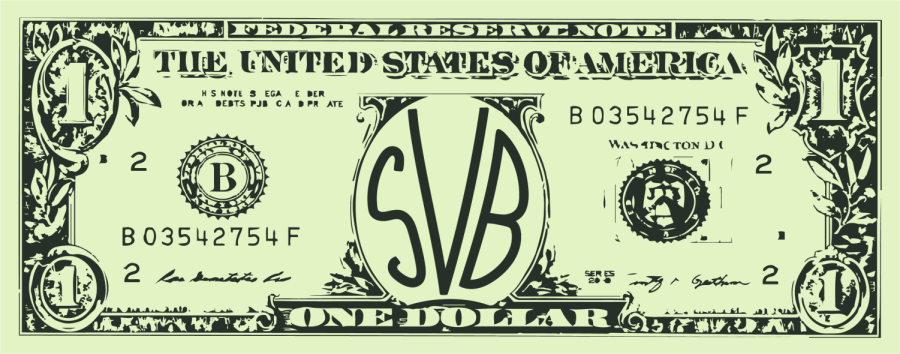Silicon Valley Bank collapse explained
On Friday, March 10, 2023, the collapse of Silicon Valley Bank made history as the second-biggest bank failure in the United States.
Silicon Valley Bank, like many of its counterparts, followed a standard procedure in which the bank kept a small portion of its deposits as liquid capital (money readily available for clients to withdraw), while investing the rest of it in typically stable long-term government bonds.
The bank ran into trouble when these bonds were destabilized. “[The collapse] is really actually tied to rising interest rates,” said Economics Teacher Christopher Gonzalez-Crane. As rates rose, the value of Silicon Valley Bank’s government bonds decreased. This economic shift, coupled with the bank’s very specific clientele base of primarily tech startups, venture capital firms and life sciences companies, paved the way for the bank’s eventual demise.
“Whenever interest rates go up, tech industries don’t do as well,” said Tristan Arnovick ‘23, a board member of Investment Club. Tech industries are often heavily reliant on venture capital firms as a source of funding, which means that when interest rates rose and venture capital money dried up, many of Silicon Valley Bank’s client companies were forced to draw down their savings.
“At that moment, Silicon Valley Bank could have gone to Wall Street and said, ‘We don’t have the liquidity to give [our clients] back their savings,’ and other banks would have helped them out,” said Gonzalez-Crane. Instead, the bank sold the entirety of its 10-year government bonds, accepting a loss of nearly $2 billion.
On Wednesday, March 8, Silicon Valley Bank officially disclosed its losses, sending a wave of panic throughout the tech industry, as well as the bank’s shareholders. This concerned them because when clients deposit money, it does not just sit. Banks use that money to put into safe, long-term investments and loans, meaning that they do not have every dollar of their clients’ cash ready on hand.
Oftentimes, banks like Silicon Valley Bank fail when large groups of depositors withdraw their money in a short period of time, and the bank does not have the money on hand. This is called a bank run.
On Friday, March 10, when Silicon Valley Bank’s collapse became apparent, the Federal Deposit Insurance Corporation (FDIC) announced it would take over the bank. The FDIC’s standard insurance coverage for depositors is up to $250,000, a number that does not nearly cover the losses of many of the bank’s clients.
Companies and households with large sums of money in the bank pleaded with the Biden Administration for financial rescue, otherwise known as a bailout. In a conference on Sunday, March 12 at the White House, President Joe Biden assured depositors that their money was safe. “Your deposits will be there when you need them,” Biden said.
While Biden’s promise is convenient for investors, others are skeptical about the real reason behind his protections. “[Silicon Valley Bank’s clients] are part of the most risk-taking part of the American economy, to begin with. These are people who are already taking the largest risks, and yet Biden is bailing them out,” said Gonzalez-Crane.
Many of the companies afraid of losing their money amidst the collapse are major Democratic donors, giving rise to theories that their political influence is a factor in Biden’s support. Apart from their ability to donate large sums of money to the Democratic Party, these companies have heightened technological literacy, which allowed them to quickly spread the news of Silicon Valley Bank’s collapse. “They are really fluent at promoting any problem they have on the internet,” Gonzalez-Crane said.
The technological and financial power of Silicon Valley Bank’s depositors has not only had economic, but also political repercussions, as Biden’s support has spurred controversy between the left and right. “The political fallout is that the right is really going to try to use this as political fodder,” said Gonzalez-Crane. “I think it is a real intersection where the personal and the political and the public [come together].”












